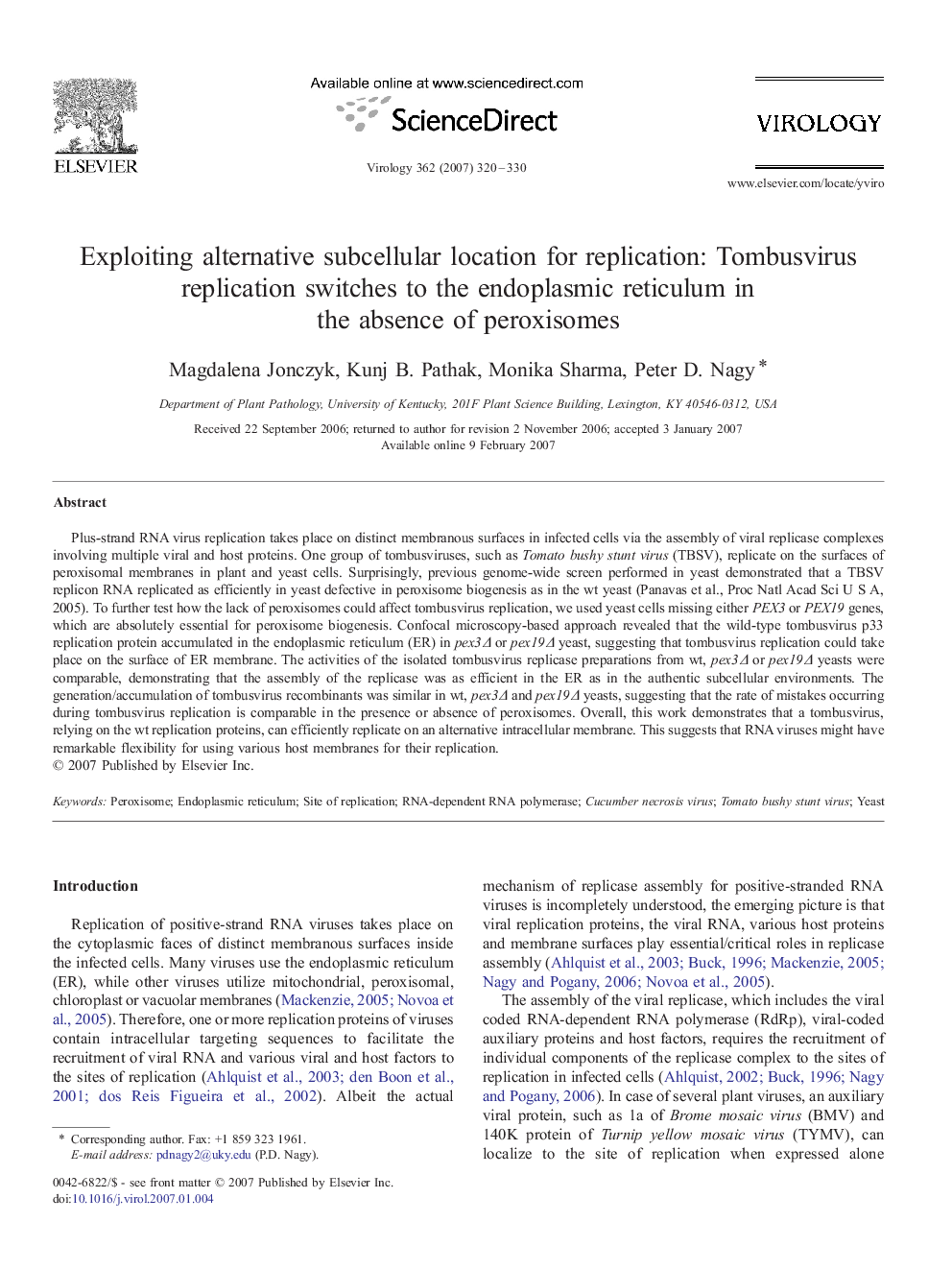| Article ID | Journal | Published Year | Pages | File Type |
|---|---|---|---|---|
| 3426351 | Virology | 2007 | 11 Pages |
Plus-strand RNA virus replication takes place on distinct membranous surfaces in infected cells via the assembly of viral replicase complexes involving multiple viral and host proteins. One group of tombusviruses, such as Tomato bushy stunt virus (TBSV), replicate on the surfaces of peroxisomal membranes in plant and yeast cells. Surprisingly, previous genome-wide screen performed in yeast demonstrated that a TBSV replicon RNA replicated as efficiently in yeast defective in peroxisome biogenesis as in the wt yeast (Panavas et al., Proc Natl Acad Sci U S A, 2005). To further test how the lack of peroxisomes could affect tombusvirus replication, we used yeast cells missing either PEX3 or PEX19 genes, which are absolutely essential for peroxisome biogenesis. Confocal microscopy-based approach revealed that the wild-type tombusvirus p33 replication protein accumulated in the endoplasmic reticulum (ER) in pex3Δ or pex19Δ yeast, suggesting that tombusvirus replication could take place on the surface of ER membrane. The activities of the isolated tombusvirus replicase preparations from wt, pex3Δ or pex19Δ yeasts were comparable, demonstrating that the assembly of the replicase was as efficient in the ER as in the authentic subcellular environments. The generation/accumulation of tombusvirus recombinants was similar in wt, pex3Δ and pex19Δ yeasts, suggesting that the rate of mistakes occurring during tombusvirus replication is comparable in the presence or absence of peroxisomes. Overall, this work demonstrates that a tombusvirus, relying on the wt replication proteins, can efficiently replicate on an alternative intracellular membrane. This suggests that RNA viruses might have remarkable flexibility for using various host membranes for their replication.
